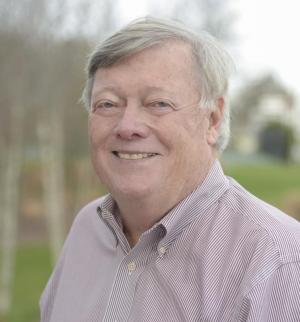Helms Wiltbanck finds his Pra Serve
The small wooden boat carrying Lewes’s first settler and his family nudged ashore on Hoornkil beach on a spring afternoon in 1663. Rocking gently in the swells behind them was the schooner that had brought them south along the East Coast from New Netherland.
Janneken Wiltbanck sat in the bow, her youngest, Abraham, in her lap. Helmanias, already knee-deep in the cold bay water, lifted out four-year-old Cornelius as a second boat, with their manservant and chests of belongings, came to rest alongside.
Wiltbanck was a stocky Swede, thirty-eight years old, as broad in the chest as a lumberjack. He wiped sea spray from his face and looked inland. There, still to be staked out, were eight hundred acres of land granted to him by the Dutch administrator of New Netherland.
Raggedly dressed soldiers from the nearby West Indies Fort helped stack the Wiltbancks’ sea chests onto a two-wheeled cart, then manhandled it across the beach and flats and an earthen dike over a stream to the fort. The rough-built West Indies Fort had been erected in 1658 to facilitate fur trading after the Dutch wrested control of Delaware from the Swedes and “purchased” the land from the native Siconese.
During their first weeks, the gregarious blue-eyed Swede from Holland forged an easy relationship with the fort’s young commander, Peter Alrich. He asked the half dozen soldiers to call him Helms “Viltbanck” and his tiny wife Jane.
Helms began to explore the area. North of the fort was an inlet to the South River, just above the river’s choppy exit into the Atlantic Ocean. A wide tidal stream flowed south from the inlet. The soldiers said it was six feet deep and could be traveled by canoe for two hours to a wide, shallow bay. It reminded Helms of the Dutch water roads he first saw when he came to Holland from Sweden as a student.
With Cornelius on his shoulders, Helms walked the well-trod Siconese path along the stream. To their left, across the stream, lay flat, sandy land where salt winds allowed only straggly clumps of sea grass, gnarled trees and blackberry bushes to grow. Beyond that was the sparkling South Bay where their schooner, now departed, had anchored.
To Helms’s right, the land sloped up to a thick forest. It was a prime location, midway between the fort and the site proposed for a town. The high woodland provided a vantage point to spot ships entering the bay.
Stretching a mile deep beyond the frontage lay one hundred fertile acres that could be cleared for lumber, then farmed. Shallow ponds of groundwater indicated the presence of fresh water. At its farthest point, the land intersected with a thriving marsh and a wide, deep waterway the soldiers had named Pagan Creek.
No one better understood the value of land and the importance of fresh water than people from the Netherlands. The Dutch term vild banck, meaning “wild land above the stream,” was in fact the root of Helm’s own name.
Wiltbanck looked skyward. The path of the sun formed an east-to-west arc over the property, providing maximum light for long growing seasons. He inhaled deeply. The air was sweetened by the smell of sassafras and brush fires started by the Siconese to flush out game.
Hands on his hips, Helms nodded. Here was the perfect pra serve where he would build his new life. It had all that was needed: plentiful game; fowl whose flocks covered the sky; fish that literally filled the inlets; primeval forests of towering white oak, pine and hickory to build boats and houses; dark, rich soil layered over centuries; and fresh, clean water from perennial underground streams the Dutch called schuykills.
Not surprisingly, the prime land coveted by Helms had already been staked out. Dirk Pieters, a soldier who lived with his wife at the fort, had bragged of acquiring a “perfect piece of land” from Abraham Clement, a fur trader. But Pieters’s claim was only that.
It would take seven more years for Wiltbanck to obtain a legitimate deed for this parcel. When executed, it would make Helms’ pra serve (and today’s Fourth Street Forest) Lewes’ first officially deeded tract of land.






















































